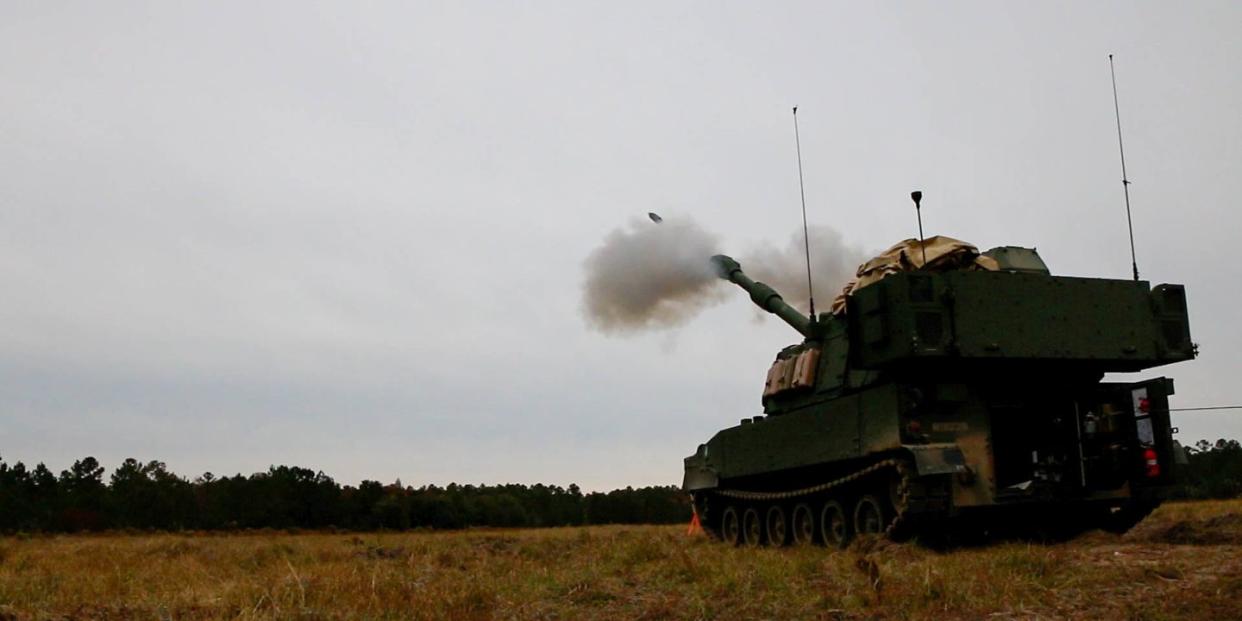The U.S. Army’s Mind-Bending 1,000-Mile Super Gun Is Officially Dead

The U.S. Army is canceling its highly ambitious Strategic Long Range Cannon (SLRC) program.
SLRC could have struck targets up to 1,150 miles away, much farther than any other cannon ever built.
Despite an outside scientific review, the Army seems to have been unclear whether or not it would have worked.
The U.S. Army has canceled a program to develop the world’s most powerful cannon. The Strategic Long Range Cannon (SLRC), had it worked, would have been able to lob a projectile 1,150 miles—much farther than any other cannon ever developed. The move comes after Congress zeroed out funding for the gun.
Congress defunded the gun in the 2022 defense budget, according to Defense News. An Army spokeswoman stated the decision to cancel the gun “eliminates potential redundancy” and that “even if the science and technology effort succeeded” it would have cost billions to develop the guns, build them, and then stand up units to field them.
✈︎ Don’t miss any of our best-in-class military and defense news. Join Pop Mech Pro.
Originally, the Army pitched the SLRC as a means of conquering the tyranny of distance, particularly in the Indo-Pacific region. SLRC guns could be emplaced in the Philippines and strike Shanghai. From Japan, the big guns could hit Beijing itself. The Army saw the guns as targeting Chinese bases and even warships in the South China Sea, clearing a path forward for the Navy and Air Force to advance across the Pacific.
The 1,000-nautical-mile (1,150-mile) range estimate was far beyond the range of any gun ever built. The M109A7 Paladin, the Army’s current self-propelled howitzer (pictured below), has a range of up to 18 miles. The Mk. 7 16-inch guns of the Iowa-class battleships could manage 28.97 miles.

SLRC was the subject of a National Academies of Sciences, Engineering, and Medicine study into the gun’s technical feasibility. The committee was tasked to “evaluate the essential technologies, materials, and manufacturing capabilities needed to achieve the program’s key performance criteria and develop a technology maturation roadmap.” The committee met between September 2020 and January 2021.
The study and hearings were closed to the public and presumed classified, but the public description of the study confirms SLRC would have used an “electromagnetic launch” (most likely some form of railgun) to reach hypersonic speeds, attaining a range of 1,000 miles. Hypersonic speeds are in excess of Mach 5, or 3,836 miles per hour.
We don’t know what the National Academies study concluded, but the wording from the Army—“even if the science and technology effort succeeded”—suggests the service was not confident the gun would have worked as advertised.
The Army’s reasoning that the cancellation “eliminates potential redundancy” is likely an allusion to the Precision Strike Missile, or PrSM. PrSM, under development by Lockheed Martin, will be fired from an M270 or HIMARS rocket artillery system to “attack, neutralize, suppress, and destroy targets using missile-delivered indirect precision fires.” The use of existing launchers also means that the Army won’t have to form new field artillery units to use PrSM.
The missile has a range of up to 499 kilometers, or 310 miles. That number sounds oddly specific because 310 miles was previously the maximum range for ground-launched missiles under the 1987 Intermediate-Range Nuclear Forces Treaty. The U.S. government abandoned the treaty in 2019 after allegations that Russia had violated it by producing a long-range, ground-launched cruise missile. It is quite possible that PrSM is capable of a much longer range, and could reach SLRC’s range goal if the need arises. The Pentagon could have been holding off on increasing the system’s range in hopes of salvaging the treaty, but Russia’s invasion of Ukraine now makes that unlikely.
The Strategic Long Range Cannon was the stuff of ambitious dreams, and could have opened up a world of possibilities. No one has ever built an electromagnetically powered gun with a range of 1,000 miles before, and in this era of tight military budgets, it looks like the U.S. Army won’t be building one any time soon.
You Might Also Like

